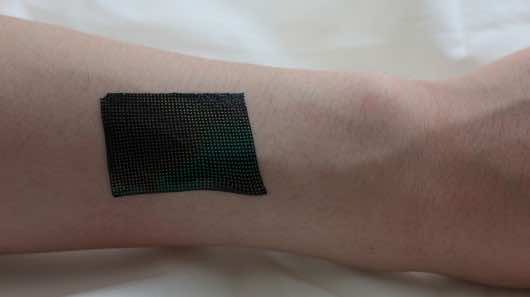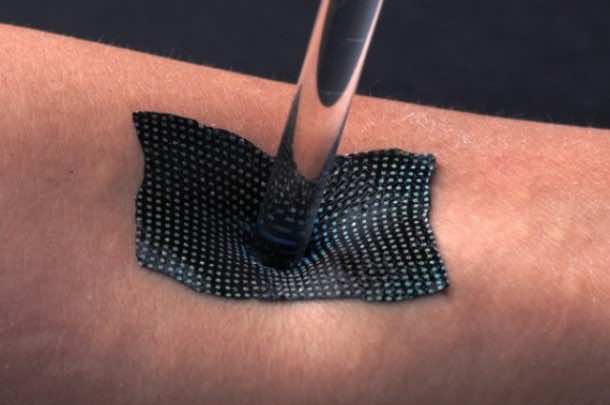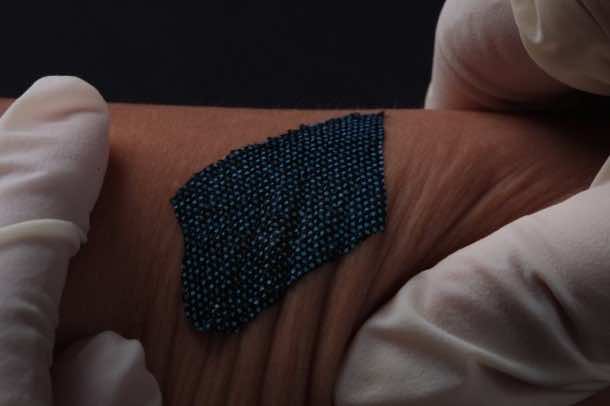A research team comprised of researchers from Northwestern University and University of Illinois at Urbana-Champaign has built a health monitoring gadget that is worn on skin and tracks skin and heart condition. It measures as a 5 cm square patch which does not stand out while alerting the user of conditions that cover a wide spectrum such as cardiovascular issues and even issues such as dry skin.
The comfort of using this patch like gadget was the key factor since it is supposed to be worn 24/7. The patch is similar to skin and is made up from about 3,600 liquid crystals that measure in at 0.5 mm squared. These liquid crystals have been laid out onto the substrate that is stretchable. These crystals work as temperature points after the device is worn and monitor the changes in temperature that the user’s skin goes through. Temperature changes allow the gadget to ascertain the user’s blood flow rate and eventually, determine the cardiovascular health. The device can also monitor skin hydration level of the user.
Upon detecting a change in the temperature, the gadget changes color in order to bring this change into the notice of the user. The algorithm incorporated into the gadget works by transforming the temperature information into health parameters and this process, as per researchers, takes only 30 seconds.
One of the senior researchers, Yonggang Huang, said, “One can imagine cosmetics companies being interested in the ability to measure skin’s dryness in a portable and non-intrusive way. This is the first device of its kind.” The device’s wireless heating system gains power from the electromagnetic waves in the air. This particular system is also responsible for monitoring the thermal properties pertaining to user’s skin. According to claims being made by the researchers owing to the 3,600 temperature points that have been incorporated into the device, the device’s spatial resolution is comparable to infrared technology while being at lower price and having much better portability.
Professor of Materials Science and Engineering at the University of Illinois and the paper’s corresponding author, John A. Rogers said, “These results provide the first examples of ‘epidermal’ photonic sensors. This technology significantly expands the range of functionality in skin-mounted devices beyond that possible with electronics alone.”
The future prospects for this technology look pretty promising. We look forward to seeing this technology in commercial use soon enough.


